- Home/
- Comparisons/
- Grocery Delivery/
- Hojicha vs Matcha
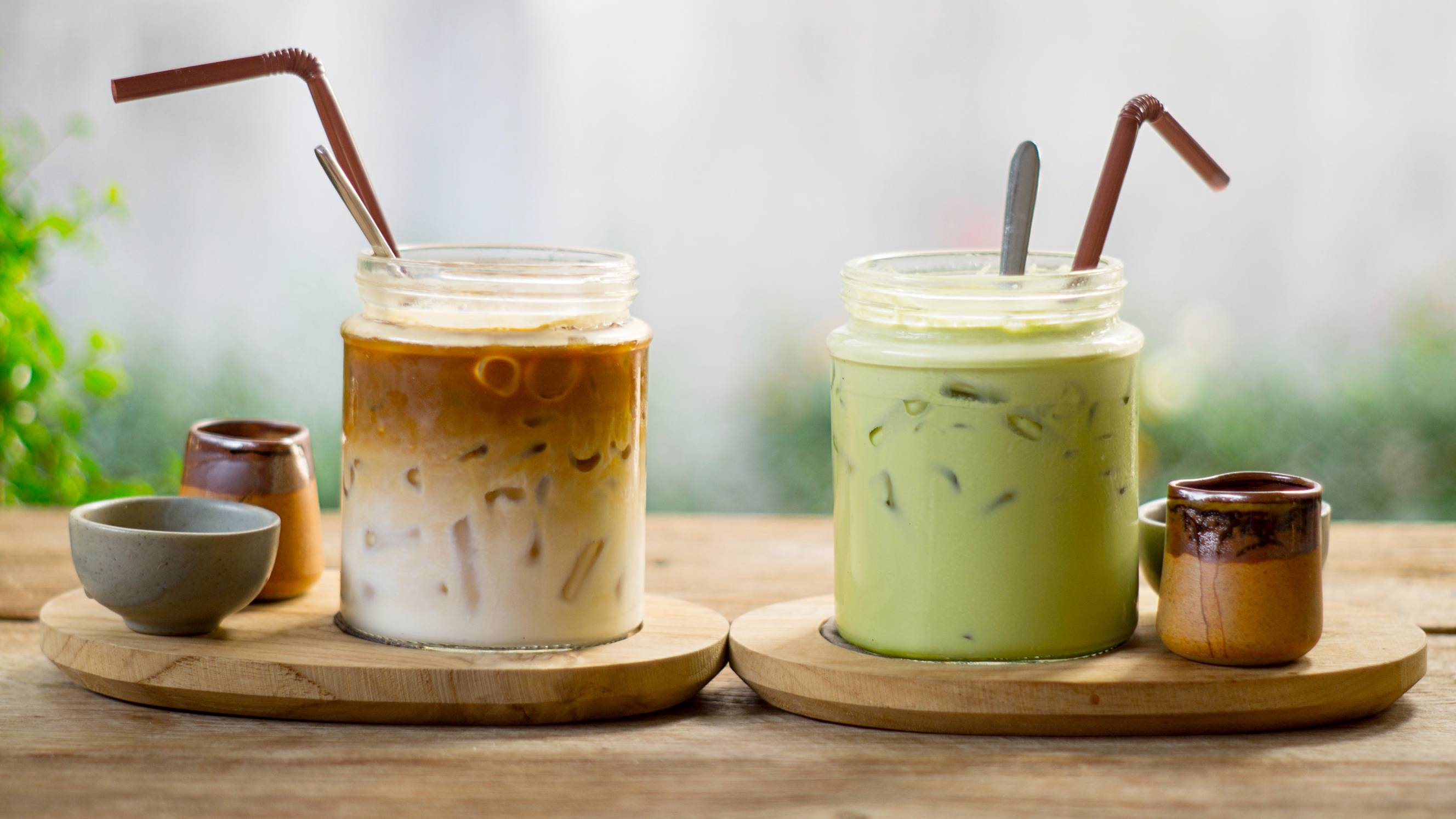
Hojicha vs matcha: Which should you get?
Comparing hojicha and matcha based on processing level, flavour profile, and more
Have groceries deliveredPublished on
Key Facts
- Hojicha is a Japanese tea made from roasted green tea leaves. It is brown in colour and produces a smoky flavour and aroma.
- Matcha is a Japanese green tea that is usually in powder form. This bright green drink has a grassy, slightly sweet, and vaguely bitter taste.
The popularity of the tea plant has led to the observation and celebration of different tea cultures around the world; the English love their Earl Grey and breakfast tea, India has chai as its national drink, and the Japanese have their own tea ceremonies.
Here in the UK, tea consumption is also part of many people’s daily lives. However, since it involves different flavours and customs, those who want to venture into the world of Japanese teas may need help learning which variety—hojicha vs matcha, for instance—is more to their taste. This guide discusses these two types of green teas and points out their similarities and differences.
What is hojicha?
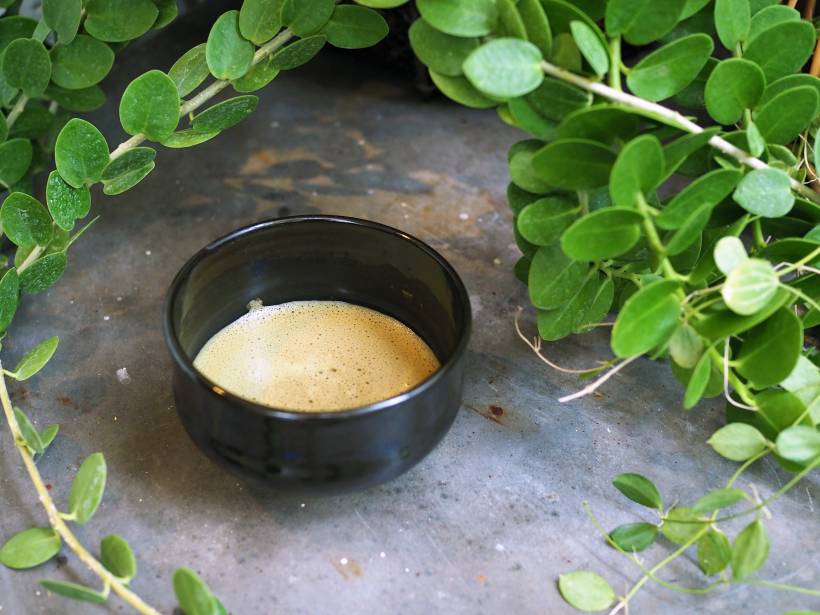 A warm bowl of comforting hojicha (Source: iStock)
A warm bowl of comforting hojicha (Source: iStock)
Hojicha is a type of green tea that originated in the 1920s in Kyoto, Japan. It is made by roasting dry bancha, sencha, or kukicha leaves. Due to how it is processed, the tea is brown in colour, has a smoky taste and aroma, and has a name that comes from the Japanese words hoji (roast) and cha (tea). Hojicha is usually available as loose leaves, but it can also be found in powdered form.
What is matcha?
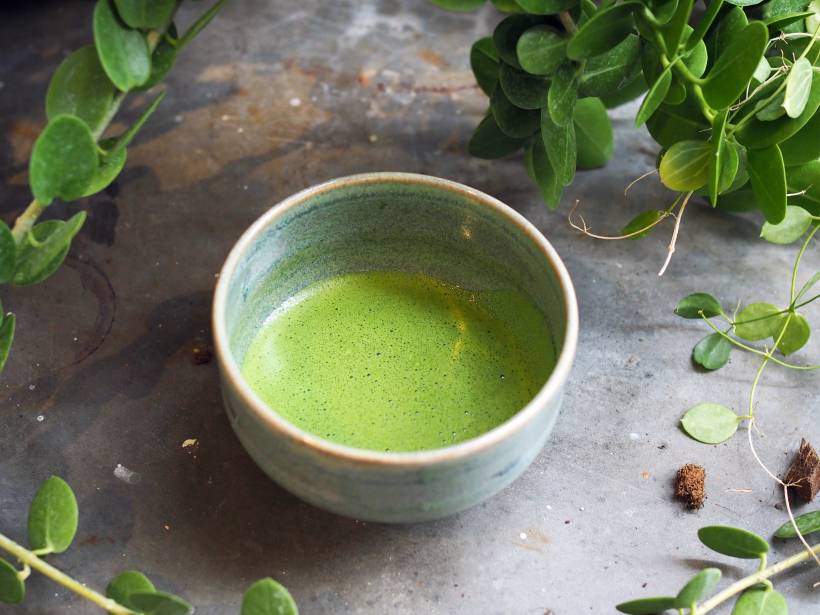 A bowl of freshly blended matcha (Source: iStock)
A bowl of freshly blended matcha (Source: iStock)
Matcha is another kind of green tea with a much longer history; its roots can be attributed to a Buddhist monk named Eisai in the 12th century, after he went back to Japan from a period of study in China. It got its name from the combination of the words matsu (to rub or to paint) and cha (tea). Usually in the form of a bright green powder, matcha is known for its vegetal and umami flavours.
Matcha vs hojicha: Which is better for your needs?
Here are some things that illustrate how matcha is different from hojicha:
In terms of processing level
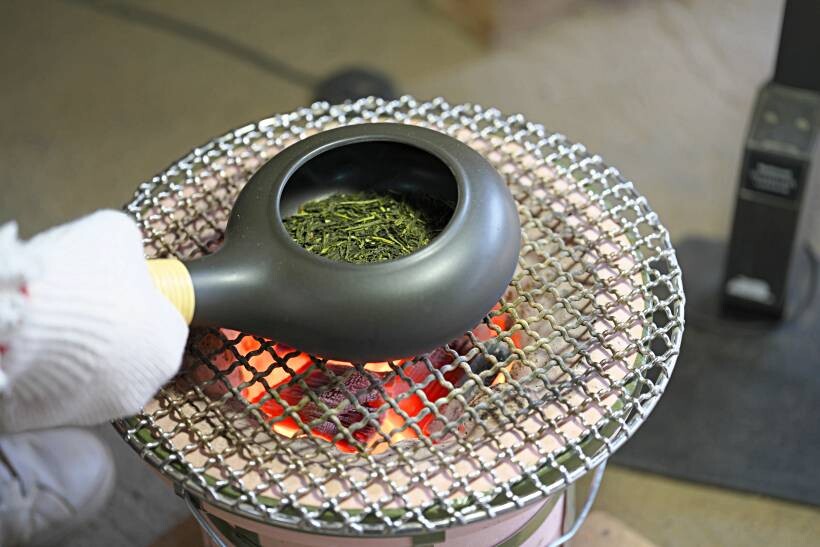 Roasting green tea leaves to create fragrant hojicha (Source: iStock)
Roasting green tea leaves to create fragrant hojicha (Source: iStock)
Producing hojicha begins with steaming mature tea leaves. They are then rolled for a couple of hours, causing their curly shape to be straightened. Afterwards, they are dried so they can be stored properly.
The steps above are repeated twice before the leaves can be roasted at 200°. Traditionally, a clay pot called horoku is used to roast them, but some manufacturers use more advanced machines.
Meanwhile, creating the fine green powder that is matcha is more complicated. The process commences right when the tea plants are being grown under the shade of rice straws or bamboo mats.
After the tea leaves are picked, they undergo steaming, air drying, and de-stemming. But before they can be ground into powder, more steps may be necessary—such as firing or blending—depending on their intended grade variety.
In terms of grade variety
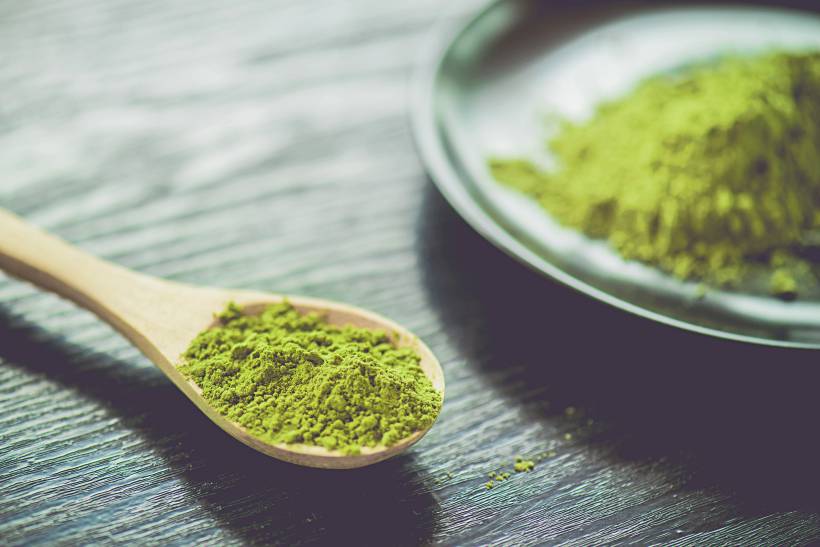 A spoonful of vibrant green matcha powder (Source: iStock)
A spoonful of vibrant green matcha powder (Source: iStock)
Another key difference between hojicha and matcha involves their grading systems. Matcha has three standardised grades: ceremonial, culinary, and daily.
Ceremonial-grade matcha, which is of top-shelf quality, is mainly used for tea ceremonies. Due to its high chlorophyll levels, matcha of this grade tends to have a deeper colour.
Culinary-grade matcha is the one used as an ingredient in various drinks and food recipes. It has five subgrades: premium, café, ingredient, classic, and kitchen.
Meanwhile, daily-grade matcha is the Goldilocks of matcha in terms of bitterness and sweetness. It is also called traditional- or premium-grade matcha.
Hojicha, on the other hand, does not follow a rigid grading system, although many are labelled as ‘premium’ to separate them from hojicha of regular or lower quality.
In terms of cost
The price of green tea varies depending on the grade, but typically, matcha powders are more expensive than packaged hojicha. The cost of an 80-gramme bag of matcha usually ranges from £9 to £80. Meanwhile, you can buy a package of hojicha with the same weight for around £7 to £21.
In terms of preparation style
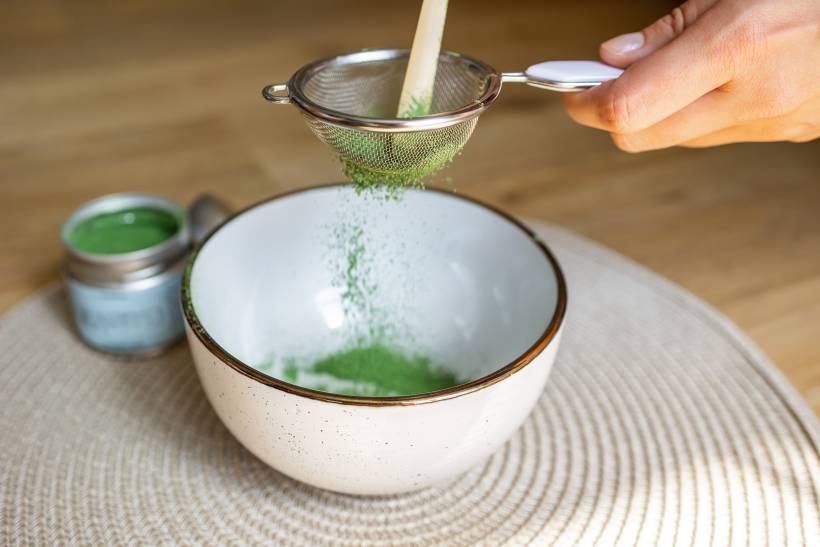 Sifting matcha powder to ensure a smooth, lump-free brew (Source: iStock)
Sifting matcha powder to ensure a smooth, lump-free brew (Source: iStock)
Another hojicha and matcha difference is regarding how they are traditionally prepared.
Brewing hojicha involves adding tea leaves to a kyusu (a type of Japanese teapot) and then pouring hot water afterwards. It only takes a minute or two before the flavour seeps in and the tea becomes ready for drinking. Note that there’s no need to stir the mixture during the process.
Making a traditional matcha drink, on the other hand, requires more steps and tools. This is true whether you want usucha (lighter type) or koicha (bolder type).
The first step involves placing a small sieve on top of a chawan (tea bowl). Afterwards, a chashaku (tea scoop) is used to add and sift matcha powder into the sieve. The next steps are pouring a small amount of hot water into the bowl and mixing it with the powder for a few seconds using a bamboo whisk. The person drinking the tea may add more water if desired.
In terms of flavour profile
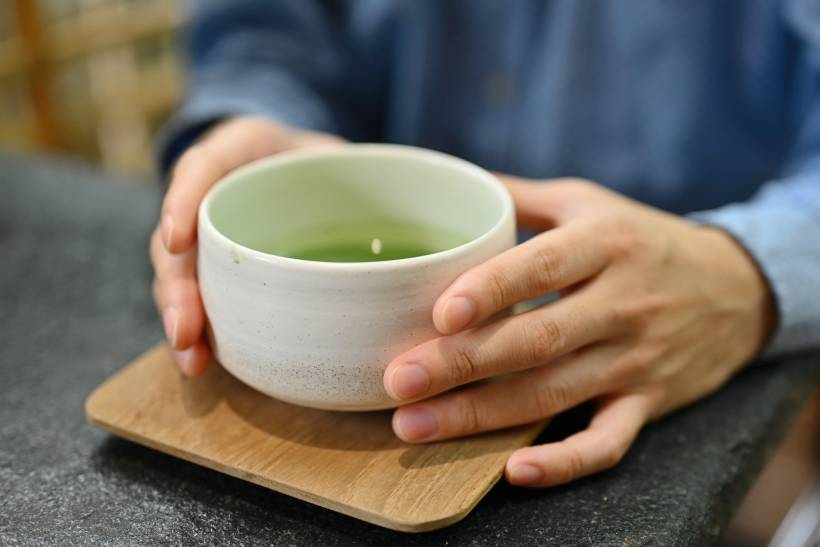 Savouring a cup of freshly brewed matcha (Source: iStock)
Savouring a cup of freshly brewed matcha (Source: iStock)
There’s a few differences between hojicha vs matcha taste-wise. The process of roasting gives hojicha a smoky taste and aroma. There’s also a hint of sweetness similar to caramel and a slight bitterness like dark chocolate that can be found in this velvety tea.
Meanwhile, matcha’s taste and aroma are predominantly vegetal, just like grass. It is also nutty, slightly bitter, and rich in umami, which refers to a distinctly savoury flavour. You know a matcha drink is well-prepared if it has a frothy texture.
In terms of nutritional content
If you’re unsure whether to choose hojicha vs matcha health benefits-wise, do know that both green teas are rich in antioxidants, catechins, polyphenols, and amino acids. These lead to younger-looking skin, a stronger immune system, and lower stress levels.
However, there’s a difference between hojicha vs matcha caffeine levels. The former has very low caffeine content, so it won’t alter your sleep schedule even if you consume it at night. Meanwhile, the latter is rich in the said stimulant, making it unsuitable for those with caffeine sensitivity.
In terms of versatility
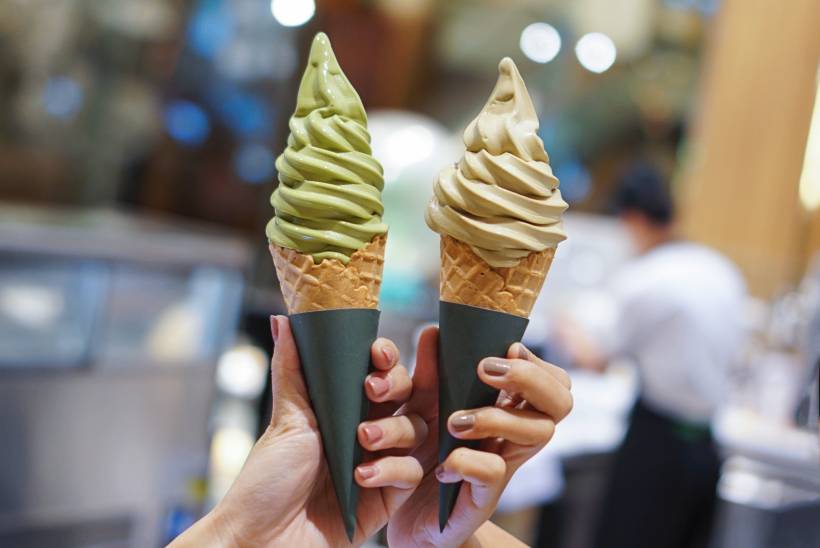 Creamy matcha and hojicha soft serve in waffle cones (Source: iStock)
Creamy matcha and hojicha soft serve in waffle cones (Source: iStock)
Either hojicha or matcha can be turned into other types of drinks; there’s hojicha latte, mojito mocktail, and macchiato, as well as matcha lemonade, smoothie, and soda. Moreover, both are used as ingredients for desserts and baked goods, including ice cream, cookies, and cake. Some may find it surprising, but they can also be used to make pasta.
Enjoy grocery delivery services with Airtasker
Want to make your own matcha or hojicha drinks and desserts? Airtasker’s grocery deliverers can scour the aisles of Tesco, Morrisons, or Aldi to help you get the necessary ingredients.
Start the process by going to the Airtasker website and posting a task with the relevant details, including the items you want to purchase, your address, and your budget.
Hojicha vs matcha
| Hojicha | Matcha | |
|
Processing Level |
Straightforward |
Complex |
|
Grade Variety |
Grading system is not rigidly defined and is typically either regular or premium |
Follows a strict grading system and has several varieties |
|
Cost |
Affordable |
Typically pricier |
|
Preparation Style |
Easy to prepare |
Brewing involves several steps and tools |
|
Flavour Profile |
Has a smoky flavour and aroma; texture is creamy |
Flavour can be described as umami; texture is frothy |
|
Nutritional Content |
Rich in antioxidants, catechins, polyphenols, and amino acids; has low caffeine content |
Also rich in the same nutrients; has high caffeine content |
|
Versatility |
Used as an ingredient to make a range of drinks, desserts, pastries, and meals |
Also has very varied uses |
FAQs on hojicha and matcha
Yes, both types of green tea come from Camelia sinensis, a type of evergreen shrub.
Yes, it is not taboo to combine hojicha and matcha, whether as a cold or hot drink.
It may not be the best idea to replace hojicha with matcha since, as discussed above, these Japanese green teas have distinct flavour profiles.
Both hojicha and matcha, when stored properly and left unopened, can be consumed within one to two years. Once their packaging is opened, they will remain fresh for around three months.
Find grocery delivery, fast
Post a task
Related articles